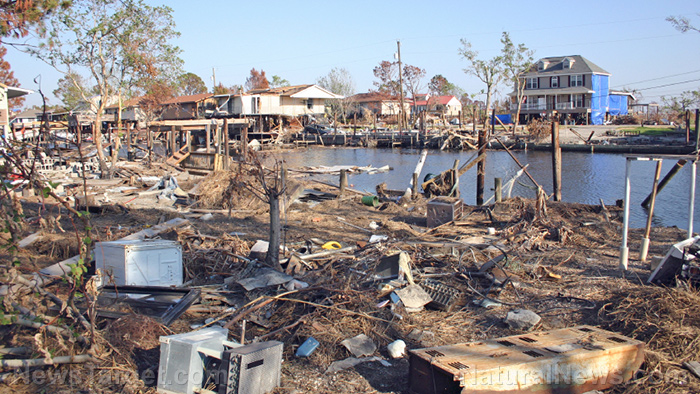
Advertisement
There are many things to consider when preparing for a disaster. You need to set up your survival stockpile, fortify your home, and finalize an emergency preparedness plan so you and your loved ones aren’t caught unawares when SHTF. (h/t to ItsTactical.com)
Emergency planning and survival supplies
In most cases, your location will be a major factor when devising an emergency preparedness plan. If you’re living in an area prone to earthquakes or tornadoes, consider these scenarios when prepping your home or buying supplies.
Bug-out bags
When prepping a bug-out bag (BOB), include the basics like a flashlight, spare batteries, drinking water and non-perishable foods.
Make sure your first aid kit includes items such as:
- Ammonia inhalants
- Anti-diarrheal medicine
- Antiseptic wipes
- Butterfly strips
- EMT shears
- EpiPen
- Medical tape
- Nitrile gloves
- Pain relievers
- Superglue
- Tweezers
Supplies for bugging in
You need one gallon of water per person per day. Stock up on enough water for at least seven days.
Do not store your food and water supplies directly on concrete since plastic containers may absorb contaminants and chemicals used to make concrete. This can make your supplies unsafe for consumption when SHTF.
Stock up on food with a long shelf life like canned food and dried beans or grains. Make sure you have the tools you need to prepare and cook your food even during a power outage.
Safety and self-defense
Once you’ve set up your supplies, keep your preps to yourself. Tell your family that maintaining secrecy is crucial to your survival, especially if you want to make sure looters don’t target your home when SHTF.
If you plan on using backup power sources like a generator, stock up on extra fuel.
Protect your family and your home with a self-defense weapon of your choice. If you plan on getting a firearm, learn how to use it responsibly to avoid accidents. Remember that desperate people will do anything to survive and that you may need to use force to protect your family when SHTF. (Related: Prepping for the unexpected: What to do before, during and after a sudden disaster.)
Should you bug in or bug out?
Make arrangements for both bugging in and bugging out, and consider your options before you head to your bug out location. Find out where emergency shelters are and check where your home is when looking up evacuation zones for your area.
Is it safe to travel with your family? Does anyone have any health conditions that can make it difficult to bug out?
If you think bugging in is safer, don’t risk leaving your home and endangering your whole family.
Don’t let stress get the best of you when SHTF. If you’re facing weather-related events, refer to your emergency preparedness plan and always have a backup plan that you’ve discussed in detail with the whole family.
Prepping with pets
Pets need to be factored into your emergency preparedness plans. Like your family members, your furry friends will require an emergency supply of food, water, medication and other pet supplies during a long-term survival scenario.
When bugging in, stock up on clean water, enough food for your whole family and have several methods to prepare and cook food if you lose power. Be ready to defend yourself, your loved ones and your property.
Before disaster strikes, set up your survival stockpile and fortify your home so you have one less thing to worry about.
Sources include:
Advertisement
Advertisements
















